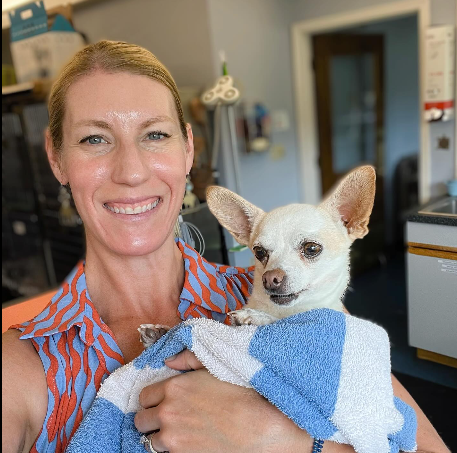East west feet, also known as splayfoot or flatfoot, is a common orthopedic condition in dogs where the paws are turned outward. This causes an abnormal gait and added pressure on the outside of the feet, which can lead to arthritis, ligament tears, and other injuries if left untreated. While the exact causes of east west feet are not fully understood, it tends to affect large and giant breed dogs more frequently. Thankfully, there are ways to treat this condition and improve your dog’s comfort and mobility. This article will cover the reasons dogs may develop east west feet, symptoms to look out for, and the various treatment options available.
Reasons for East West Feet in Dogs
Genetics and Breed Predisposition
Certain breeds like Labrador Retrievers, St Bernards, Irish Setters, and Great Danes are more prone to east west feet and other orthopedic conditions. This inherited tendency means their bone structure and connective tissues may not form properly, resulting in flatfoot. So if you have one of these high-risk breeds, carefully monitor their paws early on.
Nutritional Factors
Feeding a poor quality diet with nutritional deficiencies during the crucial developmental stage can affect proper bone growth. A lack of vitamins and minerals like copper, zinc, and manganese which are vital for healthy cartilage, joints, and connective tissues may contribute to east west feet over time.
Obesity
Carrying excess weight puts additional strain and pressure on a dog’s feet. Over time this can cause the paws to splay outward. Ensuring your dog maintains a healthy weight takes pressure off the joints and feet.
Ligament Damage
Injuries to the ligaments around the foot such as stretched or torn tendons allow the ankle and foot bones to slide, resulting in abnormal alignment. Trauma like falls or accidents are common culprits.
Symptoms of East West Feet
– Paws turn outward instead of pointing straight forward
– Toes are separated wide instead of close together
– Walking with an abnormal gait or limp
– More weight placed on outer edges of feet
– Sensitivity, irritation, or swelling on outer paws
– Bunny-hop run instead of smooth strides
– Difficulty standing for long periods
– Reluctance to exercise or play
– Lameness or joint pain after activity
If your dog shows any of these signs, a veterinary exam can determine if east west feet are present and recommend treatment options. The earlier it’s addressed, the better the outcome.
Treatment Options
Nonsurgical Treatments
Mild cases of east west feet may be managed without surgery using conservative treatments to support and align the feet properly.
Orthopedic Dog Boots – Custom dog boots with seams on the inside help gently guide the foot into the proper position. They provide stability while protecting sore spots.
Paw Balms – Soothing topical balms containing CBD oil, vitamin E, and other ingredients reduce inflammation and irritation on the outer feet.
Joint Supplements – Nutraceuticals containing glucosamine, chondroitin, hyaluronic acid, turmeric, and Omega-3s support connective tissues, cartilage, and joint lubrication. They help ease discomfort in mild cases.
Rehabilitative Exercises – Controlled exercise programs from veterinary physiotherapists help strengthen the stabilizing muscles around the feet and ankles without overexerting them. Low-impact activities like swimming are ideal.
Weight Management – If obesity is contributing, creating an individualized nutrition and weight loss regimen takes pressure off the feet.
Surgical Options
For moderate to severe east west feet, surgery is often required to realign and stabilize the foot properly, especially in growing puppies. This prevents long-term joint issues and injuries. Common surgical options include:
Extra-capsular Stabilization – Stabilizing sutures are placed on the outside of joints to secure loose joints, without penetrating the joint capsule. This limits range of motion in a controlled way while allowing room to grow.
Bone Realignment – In severe cases, the foot alignment is surgically corrected by cutting, rotating, and stabilizing with plates/screws or external fixators. This permanently establishes proper bone positioning.
Tendon Transfer – Rerouting tendon attachments redistributes forces to stabilize lax joints. It helps rebalance muscle dynamics.
Osteotomies – For severely rotated limb bones, controlled fractures are made so the bone can be straightened in the correct alignment. Metal implants hold it in place during healing.
Arthrodesis – Fusing foot joints completely eliminates any abnormal motion that could cause instability, arthritis, and pain.
Rehabilitation exercises commence once the bones and soft tissues have started healing, usually 6-8 weeks after realignment surgery. This helps strengthen the surrounding muscles for long term function. Canine hydrotherapy is especially beneficial post-op.
Prevention Tips
While some causes of east west feet like genetics and breed conformation can’t be prevented, there are ways to lower your dog’s likelihood of developing orthopedic issues.
– Choose wisely if breeding dogs predisposed to conformation flaws. Perform health screening first.
– Feed a nutritionally balanced diet with joint supporting nutrients like glucosamine and chondroitin.
– Maintain lean body condition; limit treats and monitor caloric intake.
– Discourage activities on slippery floors that could cause injury. Place area rugs for secure footing.
– Massage and stretch the feet gently to increase flexibility.
If you notice splaying, turning out, or unusual wear on your dog’s paws early, or they exhibit any limping or lameness, consult your veterinarian right away. They can assess if realignment or stabilization procedures could help before conditions worsen or arthritis sets in. Committing to conservative management or surgical solutions leads to the best quality of life. With appropriate treatment for east west feet, dogs can enjoy comfortable mobility again.

Dr. Allison Kramer is a seasoned veterinarian with a Master’s degree in Animal Behavior and over 10 years of experience specializing in canine health and behavior. Her expertise in positive reinforcement training and holistic care enhances the well-being of dogs and fosters strong pet-owner relationships. For expert advice and valuable insights, follow Dr. Kramer on Instagram @dr.allisonkramer.





